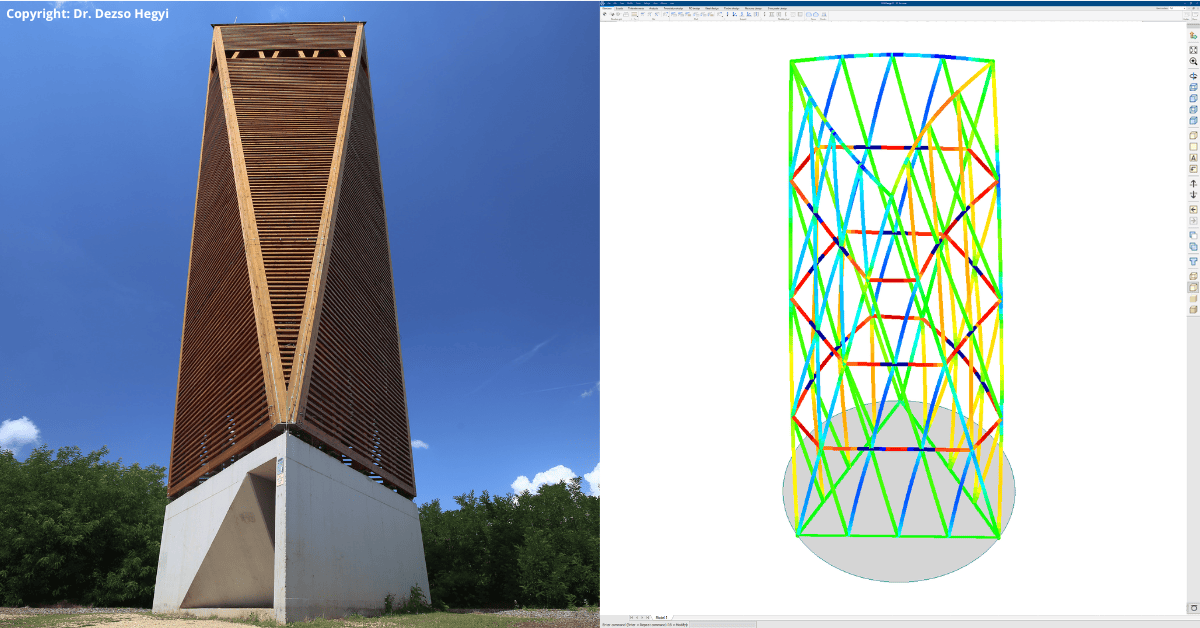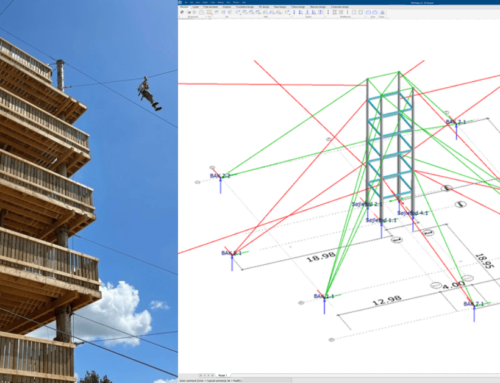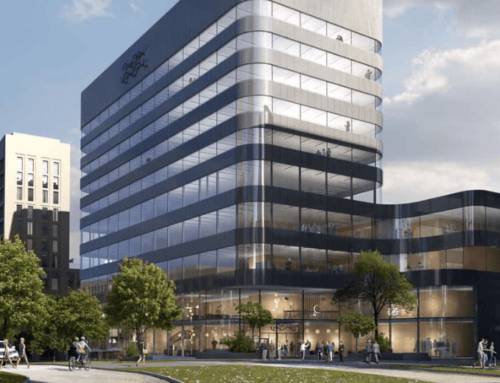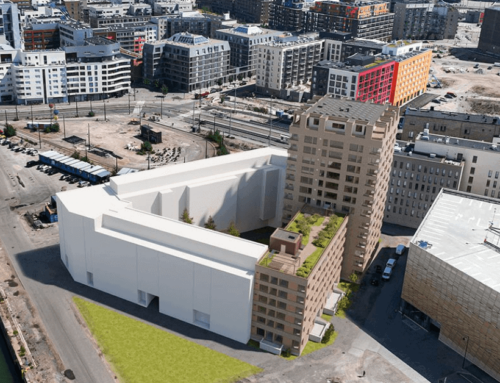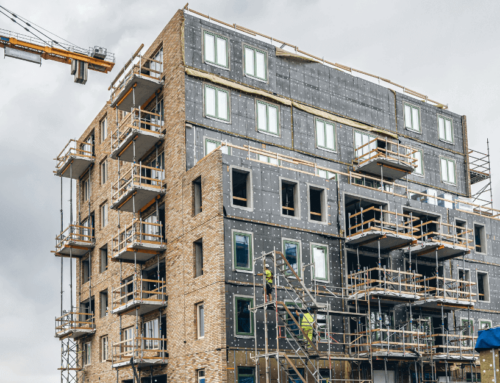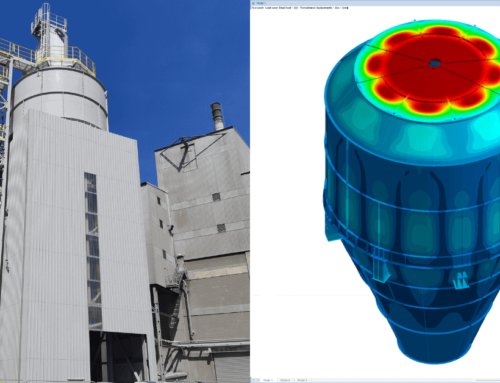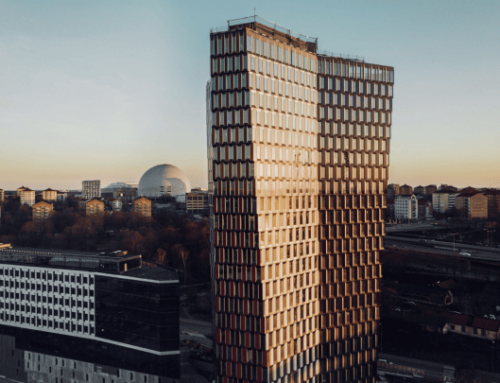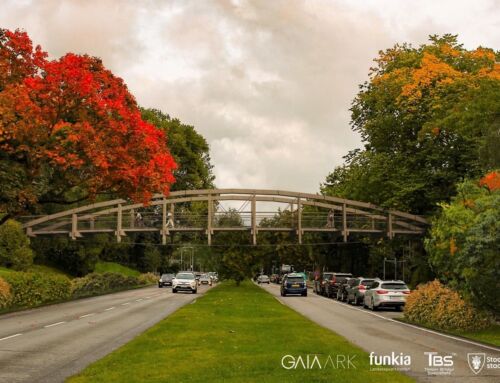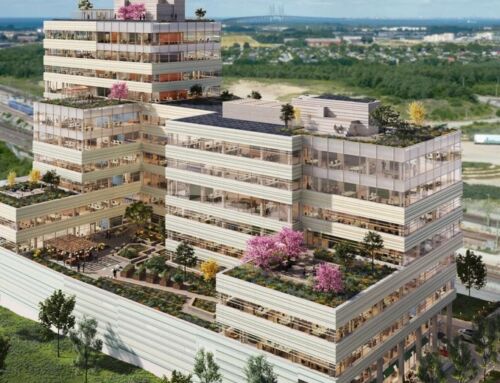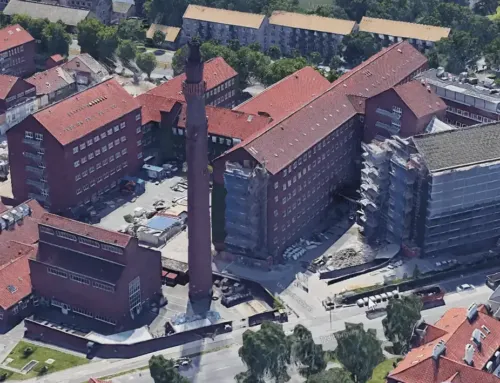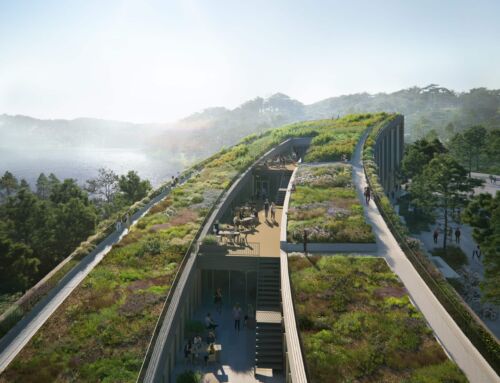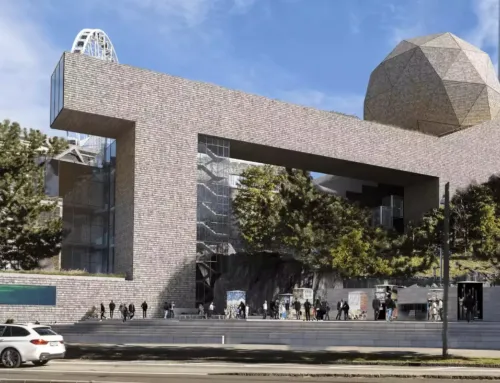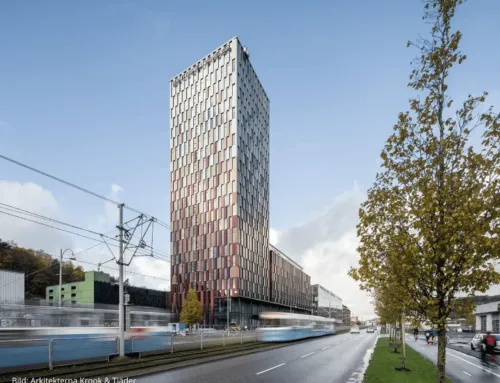The Naplás lookout tower, on the outskirts of Budapest, is a 27-meter-tall spruce timber structure with a concrete base. It provides 360-degree panoramic views of a forest. The engineers used FEM-Design to easily model and check complex geometry, analyse wind loads and eigen frequencies, and do advanced structural assessments.
Gutowski Architects Ltd. completed the project in 2021. Dezso Hegyi from Nyomasvonal Ltd. was the structural designer.
The main challenges faced
The architectural concept for the Naplás lookout tower was the first challenge. The architects had multiple discussions on approaching the tower’s design. The first decision was to use timber and to give the structure a monolithic shape. The rest of the design was free to be considered.
Another aspect they had to pay attention to was the age of the surrounding forest. They expected the trees to double in height in the future, so they designed the tower to be 27 meters tall.
Moreover, the lookout tower has a complex geometry (hexagon) with very tricky angles, which was another challenge in the project. After they decided on the geometry and connections of the elements, they had to create a very detailed 3D model for the structure.
“It was a very big task because it’s a complex geometry with very tricky angles. Handling this problem in a 2D environment would have been extremely complex, but we were able to do it in the 3D environment of FEM-Design. I’ve been using FEM-Design since the early 2000s. It’s my main software for structural analysis,” says Dr. Dezso Hegyi, structural designer at Nyomasvonal Ltd.
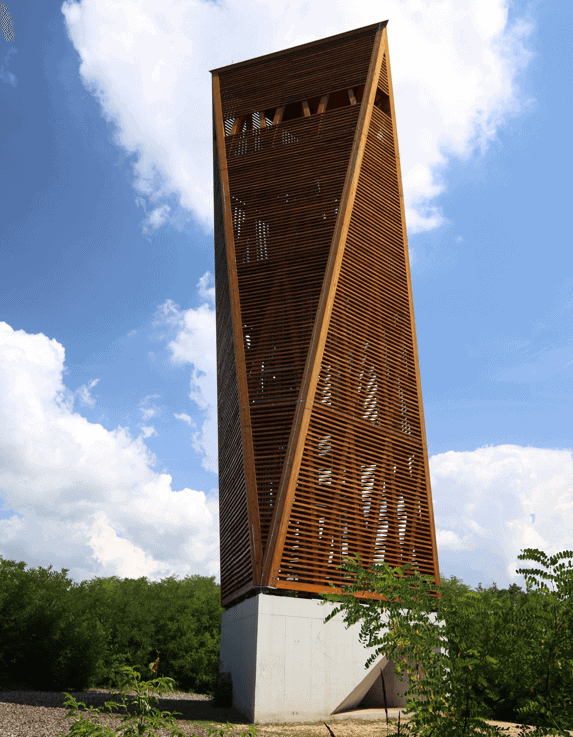
Credits: Dr. Dezso Hegyi
He also had to do wind load analysis and calculate eigen frequencies, for which he used FEM-Design as well.
“This was a challenge in the design since it’s not perpendicular geometry. If you have good software, using it to calculate wind vibrations and eigen frequencies makes sense. Otherwise, it’s challenging. Making this dynamic analysis in FEM-Design was comfortable for me,” adds Dr. Dezso Hegyi.
Why they chose FEM-Design for this project
Firstly, FEM-Design’s intuitive interface and ease of modeling allows for complex geometries to be easily represented. You don’t need to think about how the finite element method works. You only need to see if the structure works as expected.
“For me, this is the biggest benefit of FEM-Design,” says Dr. Dezso Hegyi.
Secondly, designing and analysing timber structures is effortless, facilitating both basic and advanced structural assessments. Within FEM-Design’s user-friendly 3D environment, designing timber bars and panels is easy due to fast auto-design and utilisation checks according to Eurocode 5. The sizing of the structural elements is very efficient because the software checks it in a few seconds. Users can find the realistic behaviour of timber structures, considering buckling and fire effects as well.
“If you want to optimise a structure, it’s very easy to change the sections and check whether it is working. That’s why FEM-Design is very suitable for me, even if you need non-linear analysis,” adds Dr. Dezso Hegyi.
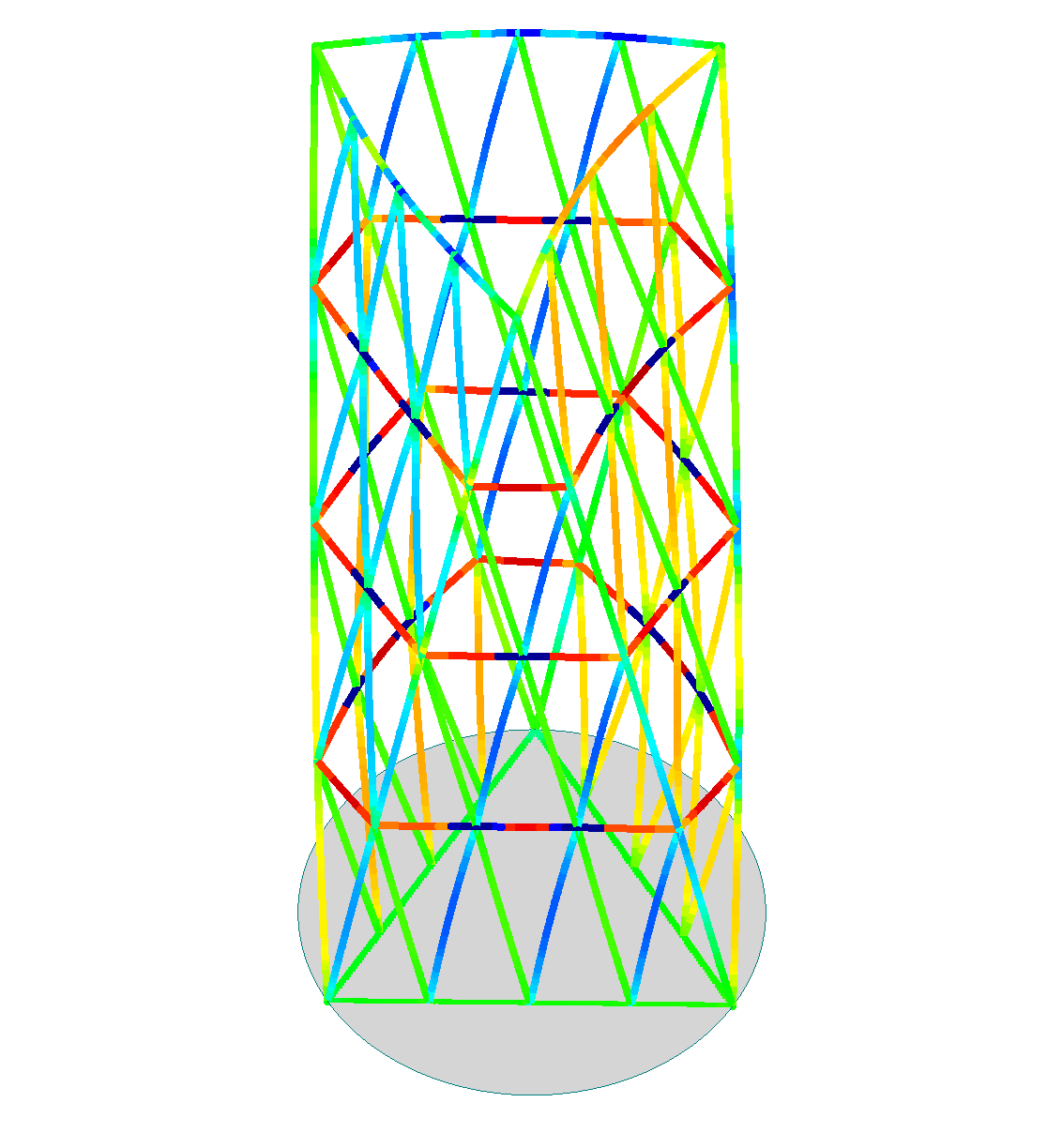
Credits: Dr. Dezso Hegyi
Thirdly, it offers the user very detailed checks and efficient error detection. Checks and error messages are very detailed. You can find details of what element was checked and how it was checked. It’s essential that the software gives you error messages, perhaps a mistake in the deformation lines or material quality. In FEM-Design, you can check the error in detail and see what you should change in the structural model.
Moreover, FEM-Design is user-friendly, and you can make models on the fly.
“Other software solutions are too complex. For example, you need to input a lot of data just to set up the coordinate system, and so on. But in FEM-Design, you don’t need to care about this, and I think it is good because you can easily start to build a model in minutes.”
About the collaboration with StruSoft in general
Dr. Dezso Hegyi has started his journey with FEM-Design in the early 2000s. He liked the software from the beginning and is pleased with the collaboration so far.
“I have a very good connection with the support team. Whenever I have a challenge or a technical question, I send an e-mail, and in one or two days, I get a very straightforward and detailed answer,” concludes Dr. Dezso Hegyi.
Customer portrait
Dr. Dezso Hegyi is a structural designer from Hungary. He has a background in civil engineering and works for Nyomasvonal Ltd. The company mostly does small or medium projects for reinforced concrete, steel, or timber, and restoration of historical buildings. The specialty of Dr. Hegyi is the cable and textile membranes, and he teaches about the special loadbearing structures in the architecture faculty of the Budapest University of Technology and Economics.
Timber structural design is easy with FEM-Design
Visit our timber design page to learn more about FEM-Design’s capabilities. You can also see two other relevant case studies for timber design, such as the wooden tower at Fyns Sommerland and the Atlassian hybrid tower.
